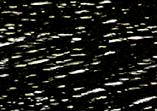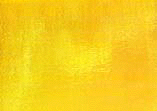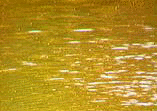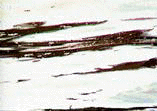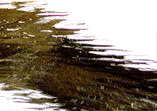
| installations |
current | recorded |
downloads |
David Cunningham |

The '5 Closedowns' were made for Channel 4 in 1984, as part of a series of television works by artists initiated and produced by Anna Ridley. Each programme was about 8 minutes long and was shown last thing at night, which in those days was around midnight on that TV station. I was concerned with a number of issues, an idea of ambient television, a way to use the more seductive qualities of the video image, soundtrack structures that didn't work purely within the domain of recorded sound.
installations
this is a sentence
david cunningham -information
david cunningham -discography
The following text is based on the original programme proposal written in 1984:
THE FROG'S EYE
One discovery that influenced the way my music developed was the use of stasis. From my pop music work through to other music based in minimalism the aspect that affected me most as a listener was the way an apparent stasis or very slow rate of change could create a framework within which other, sometimes opposing elements could be utilised to mutual advantage. I'm thinking here of very steady repetitive drum and bass rhythms in rock music and the drone related melodies common to experimental music and rock, the way jazz musicians would use very simple repetition of tunes and rhythms to create a backdrop for improvisation which, because of the recognizable, dependable and predictable backing, could often be surprisingly angular.
Some of the first
music I made was to do with the slow introduction of change to a
repetitive
sound, often self generated change: for instance one piece gave a group
of musicians a single scale to play in unison, the instruction being
that playing the scale over and over again, whatever mistakes were made
had to be incorporated into the continual repetition by the individual
musician. The piece would normally be recognizably different
after a few
minutes some musicians keep making mistakes as they tried to repeat
their
first mistake, the changes would come in clusters rather than discrete
steps,
but because there was a basic relationship between the input of
original
material and unconsciously introduced material framed by repetition,
the
mistakes rarely sound like conventional musical errors. The
process was
audible.
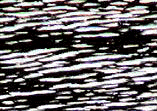
This has great bearing on the way I think about the medium of television. It is uncommon to see stasis or slowness on broadcast television. The way we look at television is moderated by this insofar as it is equally uncommon to examine a detailed complex image at any length. Obviously there are other considerations here -the resolution of a television screen - the amount of detail that it can show clearly. For television it is normal to show, for instance, a painting initially as a whole and then zoom into a series of detailed close-ups. With a Jackson Pollock painting this technique fails because of the nature of the work - each part of the painting has an equal value and there is no conventional narrative through the painting - the close-up cannot be related to the whole.
I'm particularly interested in the close visual examination of an apparently static image because of the way I have used the framework of stasis musically. It works along these lines, an analogy I've known for a long time although up until now I thought of it in terms of musical structure although it is significantly a visual analogy.
A frog sitting on a lily on a pond will sit quite motionless throughout a morning and fix its vision on a particular field of view, letting that visual field burn into its brain. When a small detail changes, the frog does not actually see the new information as such but reacts to the difference in the field of view, seeing the absence of stasis rather than what a human would see as a visual change. His perceptual system filters out what is not important to the frog using sum and difference signals. Rather than spend all day and a significant amount of brain power looking for flies to eat, this system gives the frog an automatic way to notice very small changes and without having to think about it, the tongue comes out incredibly quickly to eat any available insect. We see this as instinctive behaviour but rarely examine these mechanisms at work.
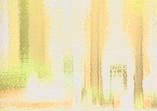
The way I want to approach these ideas visually involves the initial selection of slow or static input material. It is not my intention to produce a simple process work that has didacticism as its most obvious quality. The process is as relevant as the nature of the image chosen for the system input. As the picture will be held on screen for a long time in televisual terms it should be sufficiently complex for the eye to move around the image, to offer the viewer space to become interested.
I eventually chose reflection on water - the qualities of the rhythm of the water, the natural complexity. My concern was to obtain an image that would initiate the process itself without external influence and to look for input material which could survive as image in its own right, in this case using natural order to provide a readymade source which is pleasantly acceptable to the eye but with sufficient complexity to invite closer examination. Exploiting the instinctive behaviour of human beings.
The way I see this aesthetic is ambiguous; beside the art world mentality of seeing by way of an informed and historical process, looking and understanding, the work undeniably has a quality of television as wallpaper background. I know this from music; my commercially available work has lent itself to this area many times. (I heard of a yoga class in New York which used the mistake process music mentioned earlier as background music).
The advantage of work for broadcast rather than the art gallery is that both these areas (amongst others) can impose their own pattern of looking. In that sense the work is passive but as the mechanics of the process are visible and detectable throughout, active viewing is always possible.
One incidental visual aspect is the nature of the video image, steadier and sharper than film with an interesting 'clean' quality to the colour, at times even succulent; it is eminently suitable for the kind of prettiness that I look for as input and as surface.

When this work was completed repeated viewings led me to watch it with the sound off. This is fine for an active viewing where one consciously examines the changes in the nature of the image, but for a more passive televisual viewing I feel that some kind of music/sound, fairly restrained, should be present. Alongside the factor that broadcasters hate silence; when working with film makers in the past I have either made music after the making of the film but not especially synchronised or planned to fit with any degree of exactness to the visual material, or I've worked on the music totally independently, sometimes prior to the film being shot. With this work I am interested in working to picture in real time with hard sync. There are two concerns here; that a complete lack of relationship between sound and image other than juxtaposition and a common ambience is fairly trite, and that a way of working I've been tending towards has a definite analogue with the way I'm approaching video in this work.
David Cunningham
Much of the music made for this series found its way onto the David Cunningham CD 'Water'
piano 510 water -david cunningham
'5 Closedowns' was produced by Annalogue Ltd for Channel 4


